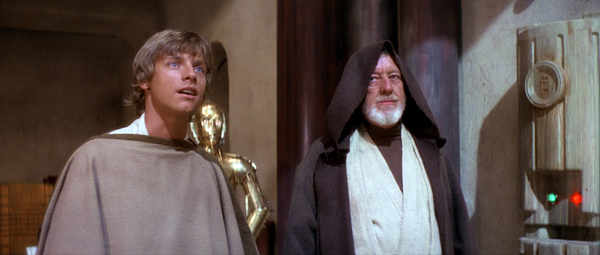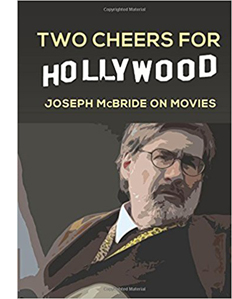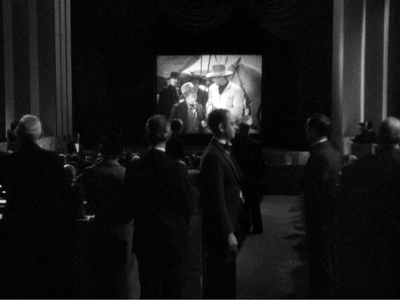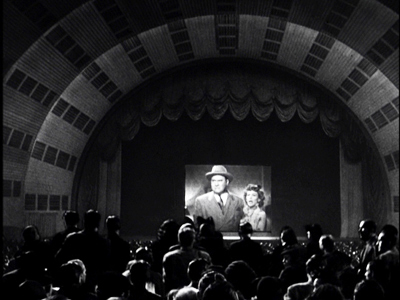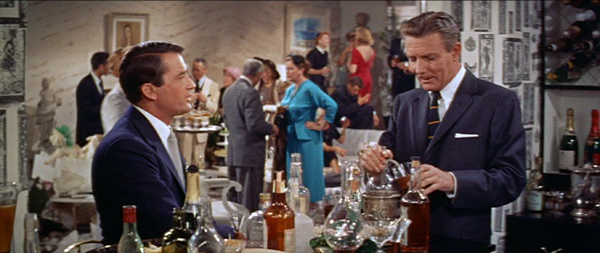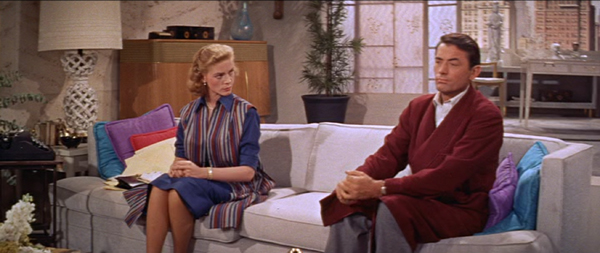Books not so briefly noted
Saturday | July 22, 2017 open printable version
open printable version
“What a piece of junk!” Star Wars: Episode IV–A New Hope.
DB here:
Over there, across the room, a stack of more or less recently published books has haunted me for months. I wanted to tell you about them. True, I had plenty of excuses: My stay in Washington, a health nuisance, our trip to Bologna’s Cinema Ritrovato, and our looming deadline for a new edition of Film History: An Introduction. But excuses aren’t necessarily good reasons. My delay was especially painful because the books were by friends.
So here’s some penance. As usual, some of the books I’ve read completely; others I’ve read only stretches of. But each is on a fascinating subject, by people of sound mind and impeccable character–in other words, exceptional researchers, thinkers, and writers.
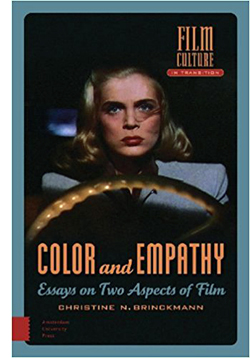 Christine N. (Noll) Brinckmann is both a critic and a filmmaker. In Color and Empathy, she brings hands-on expertise to two subjects too often ignored. Her essays treat the handling of color in silent cinema, 1950s Hollywood, experimental film, and Claire Denis’s Beau Travail. On the empathy side, she analyzes its role in documentary, Hitchcock films, and Eric de Kuyper’s Casta Diva.
Christine N. (Noll) Brinckmann is both a critic and a filmmaker. In Color and Empathy, she brings hands-on expertise to two subjects too often ignored. Her essays treat the handling of color in silent cinema, 1950s Hollywood, experimental film, and Claire Denis’s Beau Travail. On the empathy side, she analyzes its role in documentary, Hitchcock films, and Eric de Kuyper’s Casta Diva.
Noll is very good on what I’d call the “historical poetics” of color, starting from perceptual and technical aspects and moving to the ways conventions emerged historically. For example, she contrasts Pal Joey and Chungking Express: sharp-edged versus blurred, object colors versus ambient colors, narratively motivated color clusters versus poetic and associational ones. She introduces the useful concept of color “chords,” mingled hues that create motifs that weave through the film. With this concept she’s able to treat late 1950s Hollywood color comedies as having a “mannerist” style, with chords dissolving into moments of patches of pure abstraction. She finds this strategy in some very unexpected places; I never thought I’d need to look at Bob Hope’s Bachelor in Paradise again, but now it’s a must.
As a filmmaker, Noll is also sensitive to the bodily reactions of viewers. Empathy is one such general phenomenon. What I appreciated in her discussion was her eagerness to go beyond the usual sense of the term, which involves feeling for characters in an emotional register. By analyzing passages in Secret Agent and Frenzy, she also considers how visceral factors like motor mimicry play into our responses. She takes the face as the main arena of empathy, but gestures–like cracking open fingers closed in death–are central as well. Thanks to empathy, she notes, films align us with some fairly unpleasant people. “We have not invested any sympathy in the characters; we disapprove of their actions, yet wish them to succeed.”
As a filmmaker, Noll understands that films are made not with themes but with images and sounds, so her account of bodily engagement, like her analyses of color dynamics, is pervaded by the recognition that first of all a movie is a concrete experience engaging our senses and our minds. The critic can point to abstract meanings, but we’re also interested in the mechanics underlying those meanings, how movies arouse our appetites for action and emotion.
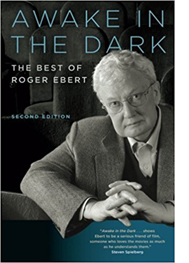
Two critics attuned to the many levels of a film’s appeals are represented in new collections. There’s now a second edition of Roger Ebert‘s Awake in the Dark: The Best of Roger Ebert, from the University of Chicago Press. The 2006 original, which contained his personal choice of his strongest reviews and essays through 2005, has been enhanced with new pieces on Roger’s favorite films from the years 2006-2012, the year before his death. Films covered are Pan’s Labyrinth, Juno, The Social Network, A Separation, and Argo, along with shorter notices on many more.
It’s clear that Roger’s abilities were undiminished despite his illness. As ever, he brings his own variety of empathy to the characters and story worlds displayed. His eye stayed sharp:”Del Toro moves between many of these scenes with a moving foreground wipe–an area of darkness, or a wall, or a tree. . .. The technique insists that his two worlds are not intercut, but live in edges of the same frame.” The dozens of pieces in the collection are full of warm, sensitive moments of appreciation. I have updated my introduction to add some further reflections on Roger’s legacy.
While Roger Ebert was starting his career in Chicago with a review of Bonnie and Clyde in 1967, Joseph McBride was at the University of Wisconsin–Madison, writing his own film criticism and working on his still valuable book on Orson Welles. A prodigy, yes. He moved to California the same year Kristin and I came to Wisconsin; we met him once, as I remember, just before he was about to leave. We’re kindred spirits, born sixteen days apart and bound by Boomer Auteurism.
Joe’s most famous screenplay is for Rock ‘n’ Roll High School, but he also scripted many of the AFI tributes. He’s a professional journalist and currently a university professor. But he is at bottom, as he readily admits, a book writer. His biographies of Capra, Spielberg, and Ford have become indispensable, while his memoir and analysis of Welles’ late career (What Ever Happened to Orson Welles?) is just as meticulously researched and intellectually ambitious.
Now Joe has given us a massive collection of his shorter pieces. Two Cheers for Hollywood, its ambivalent title echoing E. M. Forster’s Two Cheers for Democracy, includes a vast panorama of work. Journalist Joe, who has done over 15,000 interviews in his career, gives us a tempting sample here. He records encounters with screenwriters (Polonsky, Michael Wilson, Marguerite Roberts et al.) and directors (from Cukor and Wilder to Bernds, of Three Stooges fame). He talks with Stepin Fetchit in a Madison strip club and Peter O’Toole in the Beverly Wilshire (“his bony white hands and feet protruding from his royal purple robe like the wings of a great pale bird”). Saul Zaentz complains of “pseudo-stars” and Billy Wilder shows Walter Matthau how to rip out a phone cord in two jerks: “Zis is the first one, and the second zis is a ZUMP!” Each interview is prefaced by a thoughtful reflection on Joe’s own evolution as a writer.
Then there are the critical pieces, many of them magnificent. There’s the most detailed defense I’ve ever seen of the Coens, a nuanced investigation of Ford’s attitudes on race, a predictably acute account of Spielberg’s strengths and weaknesses, an appreciation of performance in Fahrenheit 451, a probing of Wild River (Kazan’s most Fordian film, methinks), and much, much more. The book contains 56 essays, all substantial. It runs to over 650 big pages. It lacks neither passion nor precision, just an index.
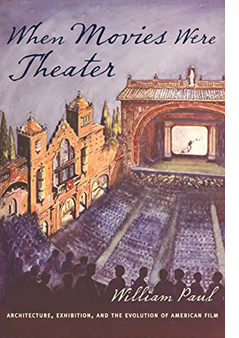 Another Boomer Auteurist is William Paul. Bill did some film reviewing in his younger days but became an academic like Noll and Joe and me. Currently Professor of Film and Media Studies at Washington University of St. Louis, he has written fine books on Lubitsch’s American films and on the tie between modern horror and modern comedy. What has consumed him in recent years is an in-depth investigation of the history of the movie house. When Movies Were Theater: Architecture, Exhibition, and the Evolution of American Film is the result, and it’s a landmark study.
Another Boomer Auteurist is William Paul. Bill did some film reviewing in his younger days but became an academic like Noll and Joe and me. Currently Professor of Film and Media Studies at Washington University of St. Louis, he has written fine books on Lubitsch’s American films and on the tie between modern horror and modern comedy. What has consumed him in recent years is an in-depth investigation of the history of the movie house. When Movies Were Theater: Architecture, Exhibition, and the Evolution of American Film is the result, and it’s a landmark study.
The broad historical arc moves, as you’d expect, from storefront theaters to picture palaces and then drive-ins and arthouses. But this is no simple account of buildings. Bill argues that the manner of presentation shaped the rise of the feature film, the recurring strategy of roadshows, the demands for double bills, and other factors of film form and industry conduct.
Bill suggests that the 1910s demand for “life-size figures” in film might have been a response to theater size, and he speculates that the move to closer shots in the 1920s might reflect enlarging venues. Makes you wonder if “intensified continuity” of the 1960s and thereafter owes something not only to TV as the ultimate destination of the images but also to the cramped screens of early “twinned” houses, those sticky-floored abominations.
As usually happens when a good historian dives deep, you get surprises. Bill uncovers floor plans with seats facing in the wrong directions, horseshoe-shaped venues, auditoriums packed with pillars, and other peculiarities. One counterintuitive thing that I learned was that screens were rather small for most of film history. A screen for a palace seating a thousand people might be only twenty feet across. Bill’s frames from Footlight Parade and Saboteur show views from the back of a playhouse, and they indicate that often the proscenium area wasn’t filled by the screen, which was cloaked in black masking.
The Hitchcock is of course a studio reconstruction of Radio City Music Hall, but Bill indicates that the proportions are accurate. In all, his When Movies Were Theater joins Douglas Gomery’s Shared Pleasures in showing, in sharp detail, just how varied and diverse American movie exhibition has been.
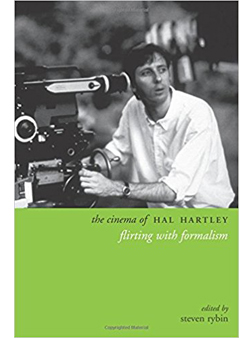 I would recommend Steven Rybin‘s anthology The Cinema of Hal Hartley: Flirting with Formalism even if I didn’t have a piece in it. For one thing, I too flirt with formalism. Hell, I nearly eloped with it. Second, my study of staging in Simple Men is pretty bare-bones compared to the rich and varied work on display in the other essays in the book. Steve has written widely on American film, both classic and contemporary (Malick, Mann). His introduction to the book ranges across a vast terrain, from models of independent film to debates about “smart cinema.”
I would recommend Steven Rybin‘s anthology The Cinema of Hal Hartley: Flirting with Formalism even if I didn’t have a piece in it. For one thing, I too flirt with formalism. Hell, I nearly eloped with it. Second, my study of staging in Simple Men is pretty bare-bones compared to the rich and varied work on display in the other essays in the book. Steve has written widely on American film, both classic and contemporary (Malick, Mann). His introduction to the book ranges across a vast terrain, from models of independent film to debates about “smart cinema.”
The essays that follow offer agreeably intricate analyses of Hartley as a romantic comedy director, of “small films,” of Parker Posey as a muse, and on the Henry Fool trilogy as centered on the implications of writing. I especially appreciated the way that all the contributors (Mark L. Berrettini, Jason David Scott, Steven Rawle, Sebastian Manley, Daniel Varndell, Fernando Gabriel Pagnoni Berns, Zachary Tavlin, and Jennifer O’Meara) show how Hartley’s authorial obsessions responded to conditions of production, industry pressures, or critical reception. It’s called context, and yields a body of criticism that does honor to a director still not as fully appreciated as he deserves to be.
Another thick context, Wisconsin-revisionist style, is on display in Bradley Schauer‘s Escape Velocity: American Science Fiction Film, 1950-1982. In working on my book on 1940s cinema, I was struck by the absence of today’s dominant genres: fantasy and science fiction. SF books and magazines became widely popular in the period but, apart from cheap serials, the genre had a delayed arrival on movie screens. When it did arrive, Brad explains, it was presented not as classic space opera but something else, what he calls “topical exploitation cinema.”
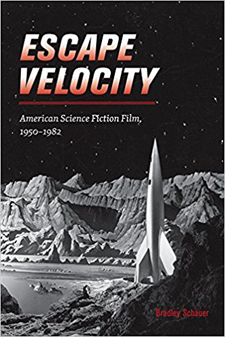 To escape the pulp associations of Flash Gordon, SF movies traded on current scientific discoveries and headline items like flying saucers. As often happens, it took a marginal player to push a new cycle. Eagle-Lion’s Destination Moon (1950) caught the attention of big studios, which embarked on mid-budget items like When Worlds Collide and The Day the Earth Stood Still (both 1951). Brad traces the cycle’s urge for legitimacy through special effects, more sophisticated narratives, and even appeal to Scripture. These developments were shaped by broader changes in the American film industry, especially concerning budgets and program policy.
To escape the pulp associations of Flash Gordon, SF movies traded on current scientific discoveries and headline items like flying saucers. As often happens, it took a marginal player to push a new cycle. Eagle-Lion’s Destination Moon (1950) caught the attention of big studios, which embarked on mid-budget items like When Worlds Collide and The Day the Earth Stood Still (both 1951). Brad traces the cycle’s urge for legitimacy through special effects, more sophisticated narratives, and even appeal to Scripture. These developments were shaped by broader changes in the American film industry, especially concerning budgets and program policy.
After spelling out this early history, Brad takes us through familiar titles from 2001 to Star Wars: Episode IV–A New Hope, but always fleshing out the story with new information and ideas. He shows that Kubrick gave his film prestige through art-cinema style and storytelling, while Lucas’s film gained traction by treating space-opera formulas with earnestness and respect rather than camp condescension. Brad analyzes important SF films that are often forgotten, like Logan’s Run and Rollerball. His discussion of Alien and Planet of the Apes reminds us that the current incarnations of these franchises have strayed somewhat from their original entries.
Again, the historian unearths surprises. Given the revulsion of today’s intellectuals toward Star Wars, which gets blamed for ushering in the Big Dumb Movie, it’s worth remembering that nearly all the critics praised it. Under the rubric “Fun in Space,” Newsweek‘s reviewer noted: “I loved Star Wars and so will you, unless you’re. . . oh well, I hope you’re not.” That’s sort of the way I feel about these books.
Earlier book-dedicated blog entries are here.
Designing Woman (1957): “There are three pillows stacked on each side of the sofa, and as if by chance they take up the colors of the party: red, turquoise, bluish-purple. . . . The color chord of the party becomes an end in itself, and the composition obtains a playful intrinsic value” (Christine Brinckmann, Color and Empathy, p. 48).












